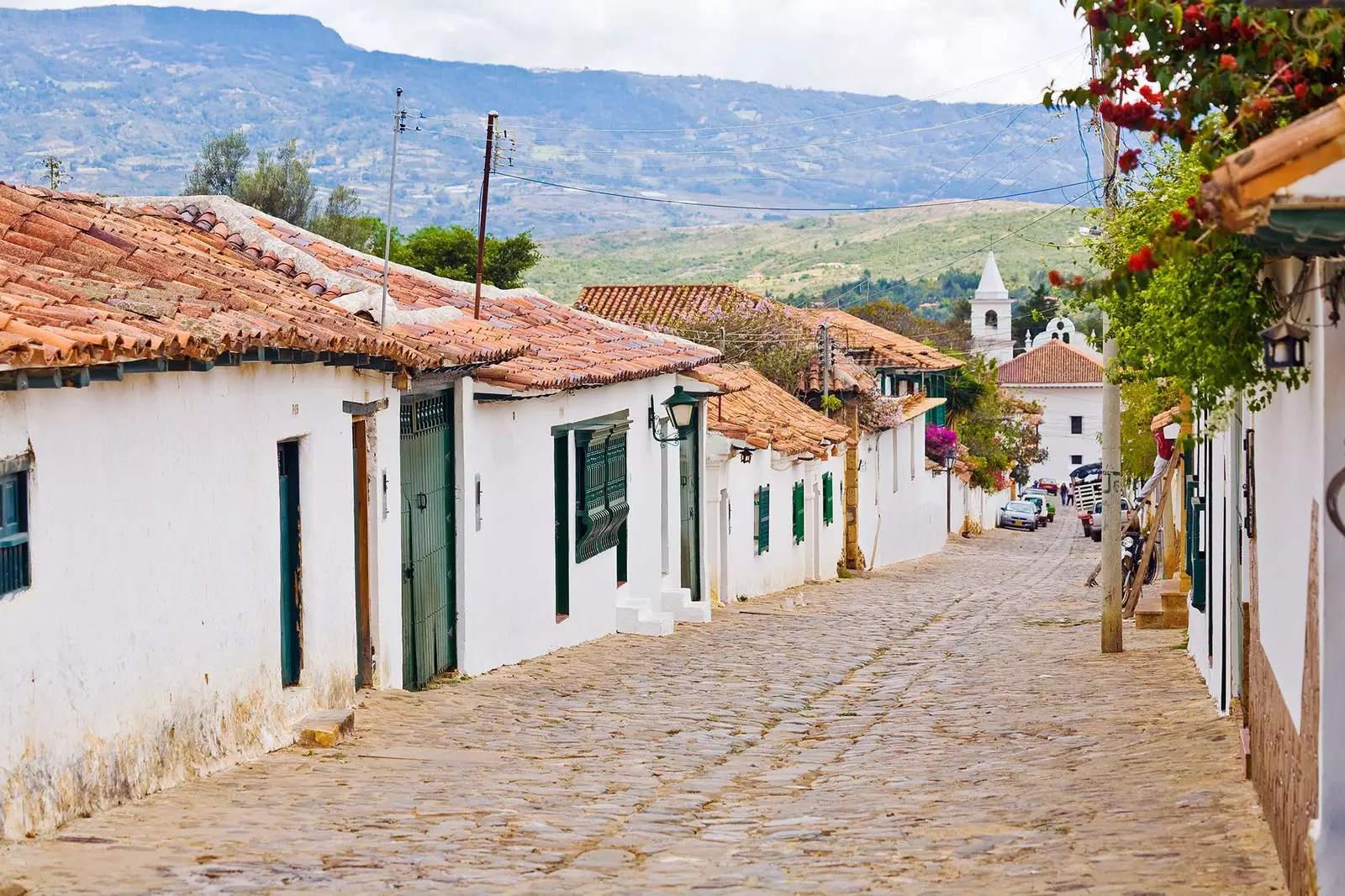
Villa de Leyva: the historical charm of the Colombian interior
After a while in Bogota , the body and the lungs ask for a break. The interior of Colombia offers very varied options, but the neighboring department of Boyaca It has two strong arguments: it is well connected to the capital and there are places like Villa de Leyva , a town of century XVI delicately preserved where it is easy to imagine what life was like in the times of the Spanish colony.
Driving north from Bogotá you get to Tunja , the main city of this department that was key in the struggle for the independence of what are now Colombia and Venezuela. A few kilometers from here took place the battle of Puente de Boyacá, the beginning of the end of the royalist army of Spain and an obligatory step to reach Villa de Leyva, historically, a place of retirement for clerics, nobles and soldiers.
East aristocrat scent It is still palpable in the cobbled streets of this municipality. Also in its old houses and convents with white facades, which, in some way, transport the visitor to the Andalusia of the years after the conquest of America.
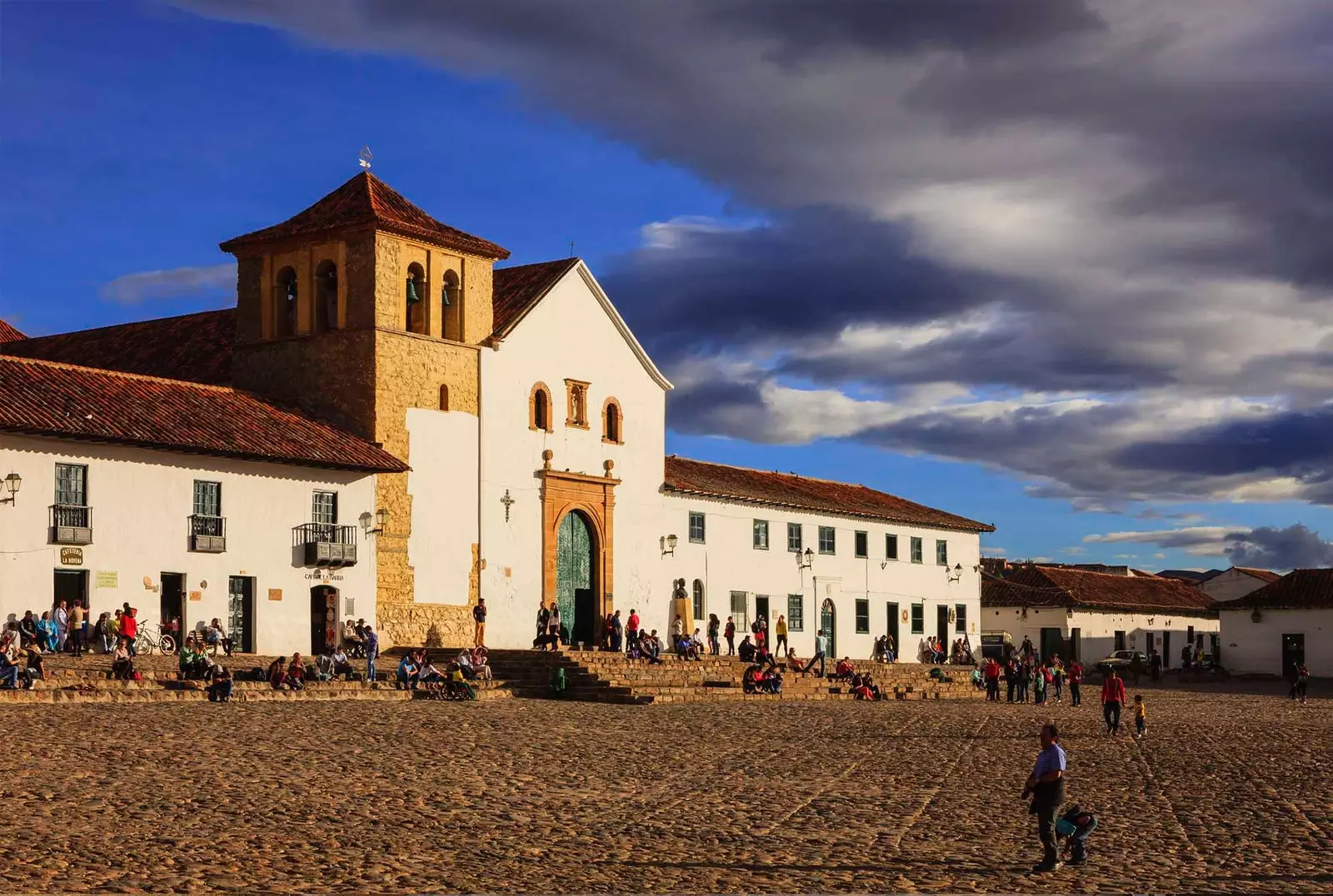
The village church
ONE OF THE LARGEST SQUARES IN SOUTH AMERICA
The emblem of Villa de Leyva is its Main Square. It is because of its beauty, but also because of its size: an aerial photo of the municipality shows it as a huge empty square delimited by small reddish roofs. In total, 14,000 square meters of square, a rarity in Colombia, and even among the great colonial cities of the continent.
Stepping on its large cobblestone pavement, worn by the passing of the centuries, you can see in the center a small mudejar fountain, old water supply point for neighbors. Beyond this detail, the simplicity of the square and the church that heads it, a parish temple that rises above the mountain landscape that surrounds the town, is surprising.
The luxuries in this city, founded in 1572 by order of Andrés Díaz Venero de Leiva -first governor of the New Kingdom of Granada-, were always within the colonial mansions, Today perfectly restored. From the center of the Plaza Mayor three good examples can be seen: the House of Juan de Castellanos and its arcades, which today functions as the Mayor's Office; the Quintero House and the **Luis Alberto Acuña House-Museum.**
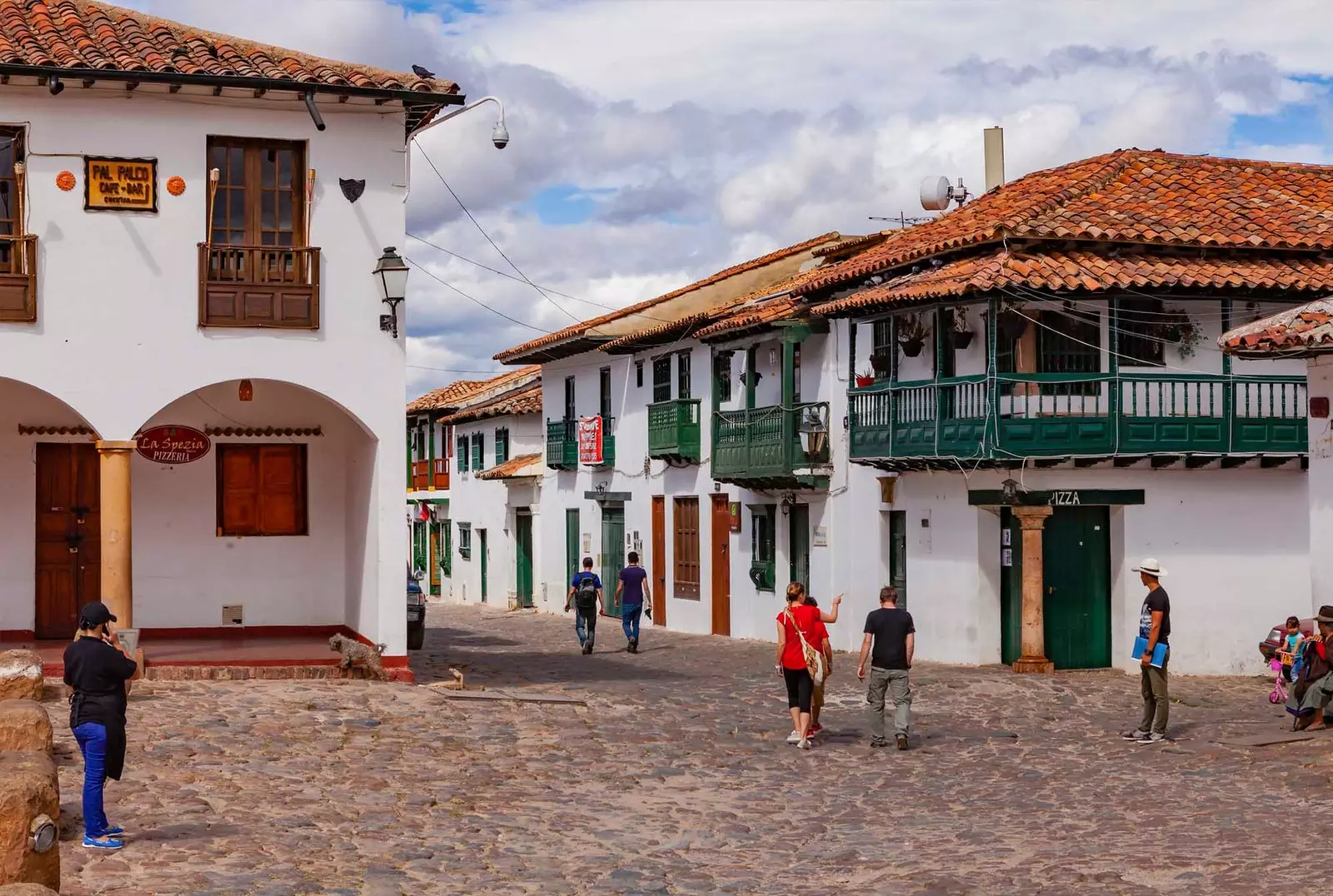
Streets where time doesn't seem to pass
PROTAGONISM IN THE INDEPENDENCE OF COLOMBIA
The currently lethargic atmosphere of this municipality declared National Monument in 1954 - especially on weekdays, when many of the tourists disappear - should not be confused. Villa de Leyva had a decisive role in the creation of Colombia as an independent country.
In another of the corners of the Plaza Mayor, inside a mansion that today shows its wooden windows and stone doors intact, in the 19th century the first laws of the Republic of Colombia. Several of the heroes of independence were present there, such as Simon Bolivar either Antonio nariño . The latter also has a museum dedicated to him in another mansion in the town, where he spent the last months of his life, which is also worth a visit.
Not far away -nothing is far in Villa, as its neighbors call it- is the Antonio Ricaurte House-Museum . This young general entered the History of the country that was being born at the immolate against the besieging Spanish troops. His birthplace, an elegant period mansion, is today also a museum dedicated to the Colombian air force.
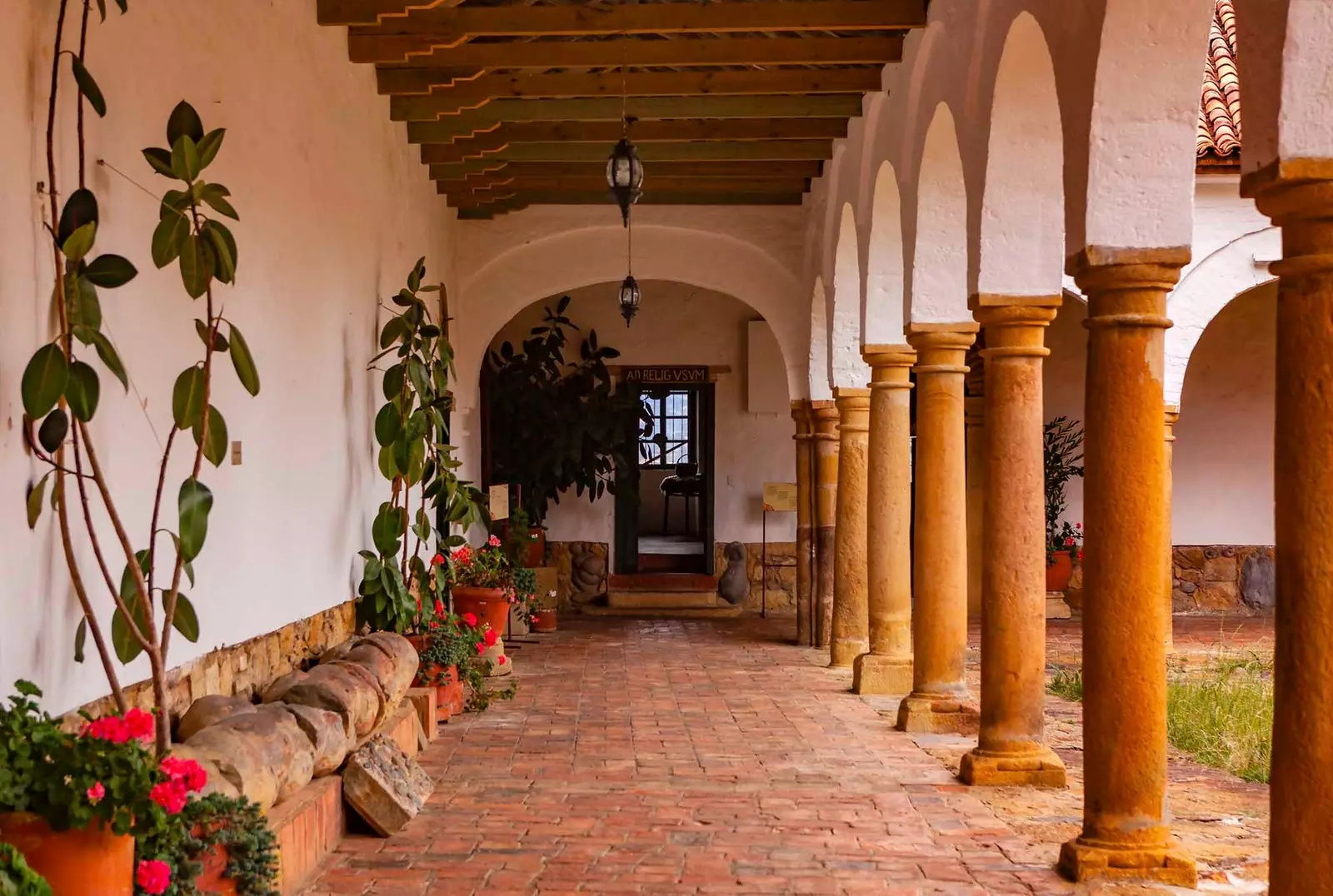
The beautiful Convent of Santo Ecce Homo
The religious importance of this town located in the eastern Andes mountain range (at 2,143 meters, about 500 meters lower than Bogotá) is also recognized in the nearby Carmen Square. In front of Convent of the Discalced Carmelites , is found the Carmen Museum of Religious Art , another of the mandatory stops on this trip, with an amazing collection of paintings, sculptures and carvings, among other objects.
FOSSILS, INDIGENOUS SANCTUARIES AND A NATURE RESERVE
After one or two days strolling through the streets of Villa de Leyva, an ideal option is to discover its surroundings, because the valley in which this municipality is located is one of the richest areas of Colombia in fossils and other prehistoric remains.
Barely five kilometers from the town, a peasant found in the 70s an enormous fossil with the appearance of an alligator. The animal, a 12 meter marine reptile in length that inhabited the region 110 million years ago, was later baptized as Kronosaurus Boyacensis. Around this finding, hundreds of other remains of this type are exhibited today, especially multiple ammonites, a class of marine molluscs that is now extinct and omnipresent in this region.
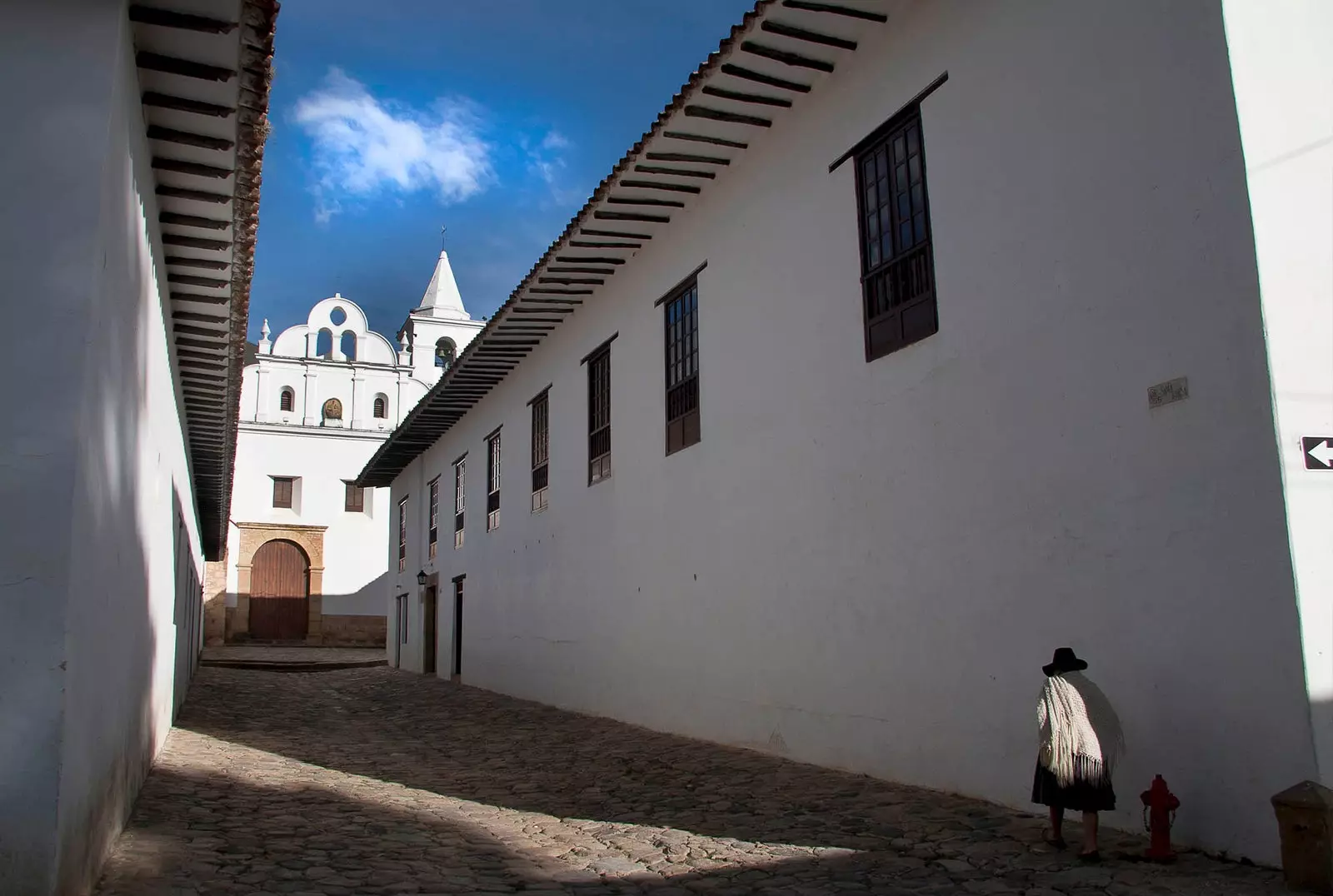
The street that leads to the convent of the Carmelitas Descalzas
Closer on the timeline are two other places of interest. The Monquirá Archaeological Park , also know as Little Hell , is made up of dozens of stone columns that are believed to have been used as a sacred place by the muiscas , the majority pre-Columbian indigenous civilization in this region. Several kilometers further on is the Convent of Santo Ecce Homo, a beautiful monastery built by Dominican friars and that today continues to function as a spiritual retreat.
To finish off this varied menu, and if what you are looking for is pure nature, the best option is to make a route through the Sanctuary of Fauna and Flora Iguaqué .
This natural reserve hides the lagoon of the same name, a sacred place where the Muiscas placed the origin of humanity. Here you can see a typical paramo landscape at a height close to 3,700 meters, completely different from other areas of the municipality.
A MARKET TO LIGHT UP THE EYES
If the trip gives us in Villa de Leyva a Saturday any, the visitor will have the opportunity to stroll through the popular market that is held in the upper part of the town. Feijoas, peaches, guavas, figs, cape gooseberries, curubas, pears, pineapples, bananas, tree tomatoes or lulos are just some of the fruits to come across. If we talk about vegetables, here are beets, chard, rubas, cabbage, avocados, cucumbers and all kinds of potatoes. An endless list of fresh products that are combined with ready-to-eat arepas, minced meat and steaming corn on the cob.
The low light pollution in the area and its height have also made this town a prominent destination for stargazing . Throughout the year, but especially in February, when the Villa de Leyva Astronomical Festival -, it is common to find amateurs trying to balance their telescopes on the irregular cobblestones of the town square. A place that also serves as a stage for the Wind and Kite Festival, which is celebrated in August.
These are activities that go perfectly with the calm rhythm of this locality, included in the Network of Heritage Peoples of Colombia , a distinction that it shares with sixteen other towns in the country. The pause and conservation of Villa de Leyva are also explained by the lethargy in which it sank for decades after its years of prosperity, a time of impasse that served to maintain its balconies and patios almost as when they were built.
